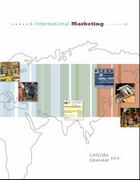1. Suppose that the economy's production function is Y = K.5 (eL).5 , that the saving rate, s, is equal to 10 percent, and the depreciation rate, S, is equal to 3 percent. Suppose further that the number of workers, L, grows at 1 percent a year and that the rate of technological progress, g, is 1 percent per year. Find the steady-state values of the following: a. The capital stock per efficiency units of labor. b. Output per efficiency units of labor. C. The growth rate of output per efficiency units of labor. d The growth rate of output per worker. e. The growth rate of outputPlease answer the following questions after reading Lectures 3, 4 and 5: 1. Please list, describe and explain each one of the five major types of taxes as discussed in Lectures 3,4, and 5: What is the FIT? What is the FICA tax? What is the State Income tax? What is the sales tax? What are the various types of "special taxes and fees" that a family may pay? 2. How does each type of tax contribute to the U.S. economy? 3.. Please rank each type of tax from #1, 'contributes the most' to our economy, to #5, 'contributes the least' to our economy, and please defend your ranking system. 4. What are three harmful effects of the combined tax on the typical U.S. worker's next $1,000 pay raise? 5. What would you do to make the current system of taxation more fair? Why? Please discuss at least one SPECIFIC proposal that would improve the current tax system, in your opinion.(g) If the COVID pandemic causes C to fall by 300, find the new equilibrium GDP (1") [h) Draw the impact of this on your diagrams in parts e and [ (i) What would you expect to happen to the unemployment rate? (j) What would you expect to happen to inflation in the short run? (k) What would you expect to happen to inflation in the long run? (1) What could the fiscal authorities do to help undo the shock that occurred in part g (Provide numeric answers) (m) What could the monetary authorities do to help undo the shock that occurred in part g (No numbers, just say what they would do)Part A: True, False, Why Questions 1 through 5 (1) Bob is playing a normal form game against Ann. Bob's mixed strategy of strictly dominates his pure strategy s. However, Bob refuses to play a mixed strategy. It is possible for Bob to have a belief such that so is the best choice from his set of PURE strategies. (2) Ann and Bob are playing a standard two period alternating offers bargaining game identical to the one covered in lecture. Ann makes the offer in the first period, and Bob makes the offer in the second. Let 6; be Bob's discount factor. If 0










